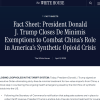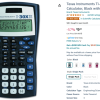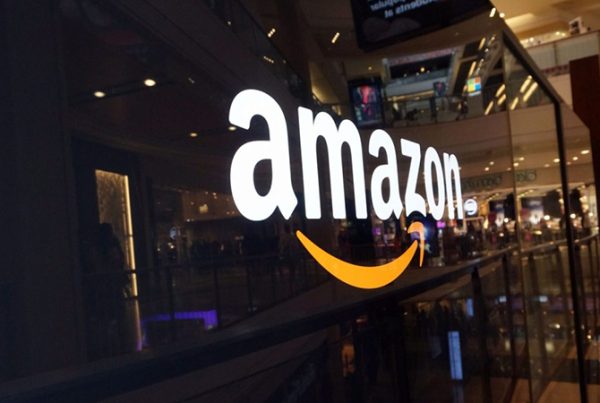The Underlying Currents of the Low-Price Battle
The E-Commerce Battlefield in 2025
The global e-commerce landscape in 2025 is a warzone. Amazon, the $1.8 trillion giant, held a dominant 37.6% share of the U.S. e-commerce market in 2024 (Statista), standing firm like an unshakable tower. However, a new challenger has stormed onto the scene—Temu. With an estimated GMV of $50-70.8 billion in 2024 (Backlinko), Temu has lured in 150-185 million monthly active users in the U.S. (MobiLoud) with $6 phone cases and $3 t-shirts. This is more than just platform competition—it’s a high-stakes battle of low prices and technological prowess.

Amazon boasts the reliability of its FBA next-day delivery service and the loyalty of approximately 115 million Prime members (Statista). In contrast, Temu leverages the unparalleled efficiency of the Chinese supply chain and aggressive subsidies to disrupt the market. However, in March 2025, the Trump administration raised tariffs on Chinese goods from 10% to 20%, with threats of an increase to 60%, and eliminated the de minimis rule, which previously allowed duty-free imports under $800. This policy directly threatens Temu’s survival while forcing Amazon to rethink its globalization strategy.
At the heart of this war are Chinese sellers. They make up 63% of Amazon’s U.S. marketplace (around 693,000 sellers, ecomcrew.com) and serve as the backbone of Temu’s rapid rise. As a global e-commerce analyst, I see this as more than just a battle between two platforms—it’s a turning point for Chinese sellers worldwide. Will they adapt and fight back, or will they retreat? The answer will define the future of e-commerce.
Amazon vs. Temu: A Clash of Business Models
Amazon: The Tech-Driven E-Commerce Empire
Amazon is not just an e-commerce platform; it is a technology-driven business powerhouse. Its FBA service ensures delivery speeds that are nearly unbeatable—within 48 hours. In 2024, its advertising revenue was projected to reach $45 billion (SellerSprite), fueling traffic for 1.1 million active sellers (contimod.com). From high-end electronics to low-cost essentials, Amazon sells it all. In November 2023, it launched Amazon Haul, targeting the sub-$20 market with direct shipping, striking directly at Temu. With an ad spend exceeding $20 billion in 2024 (Forbes), Amazon’s strategy isn’t just about burning cash—it’s about precision.
Amazon’s real weapon is data. Its Seller Central tools for sales forecasting and inventory optimization act as a “cheat code” for sellers. This closed-loop ecosystem is the pinnacle of technology and commerce. For Chinese sellers, Amazon offers a fertile ground—but only if they can afford the investment and keep up with its technological demands.

Temu: The Master of Ultra-Low Prices
Temu’s meteoric rise is fueled by an extreme focus on cost efficiency. Launched in 2022 and entering the U.S. market in 2023, it quickly gained traction with outrageously low prices. By 2025, it reduced delivery times from 6-20 days to 5-10 days (CNBC), experimenting with U.S.-based warehouses. With a commission rate of 15%-30% (temufinds.com) and heavy subsidies, both sellers and buyers find it hard to resist. In 2024, Temu slashed its ad budget from $5 billion to $4.3 billion (KrASIA) while aggressively expanding into Europe and Latin America.
The core of Temu’s model lies in China’s supply chain. From Shenzhen to Yiwu, factories churn out products at lightning speed, cutting out middlemen and keeping costs rock-bottom. However, this model has a glaring weakness—it heavily depends on favorable policies and logistics, making it a high-risk endeavor.

The Reality for Chinese Sellers: A Cold, Hard Truth
Data Exposes the Brutal Reality
Chinese sellers dominate the low-price segment but struggle with profit margins and brand value. While they make up 63% of Amazon’s U.S. sellers, they only contribute 25%-28% of GMV (Statista 2023-2024). A $10 phone case sells for $15-$20 domestically in the U.S., creating a price gap of 40%-60%. Temu is even more aggressive, with a $6 average price for phone cases—30%-40% lower than Amazon—entirely supported by China’s supply chain.
Breaking Down the Profit Margins
Let’s analyze the real costs of selling a $10 phone case:
Amazon:
- Referral Fee: $1.70 (17%)
- FBA Fee: $2.50
- Net Revenue: $5.80
- Costs:
- Manufacturing: $2.00
- Shipping (FBA sea freight): $0.08
- Tariffs (10%): $0.20
- Packaging: $0.50
- Fixed Costs (annual $20,000 amortized): $2.00
- Total Cost: $4.78
- Profit: $1.02 (10.2% margin)
Temu:
- Commission: $2.00 (20%)
- Net Revenue: $8.00
- Costs:
- Manufacturing: $2.00
- Shipping (direct mail): $2.50
- Tariffs (10%): $0.20
- Packaging: $0.50
- Fixed Costs: $2.00
- Total Cost: $7.20
- Profit: $0.80 (8% margin)
Amazon’s logistics efficiency provides a slight profit advantage, while Temu’s high shipping costs pose a major challenge. In 2023, Temu lost over $30 per order (WIRED), and as subsidies shrink in 2024, its profits are on shaky ground.

The Crossroads for Chinese Sellers
Amazon offers brand-building and high-profit potential, with FBA and advertising tools yielding up to a 4:1 ROI. Temu, on the other hand, remains a volume-based battlefield where small items still benefit from traffic boosts, but long-term stability is questionable. One Yiwu seller told me: “Temu is for quick cash, Amazon is for the future.” This isn’t an inspirational quote—it’s cold, hard business logic.
The Trump Administration’s Tariff Shockwave: A Make-or-Break Moment
In March 2025, Trump’s tariff policies struck a devastating blow to Chinese sellers. With tariffs rising from 10% to 20%—and potentially to 60%—and the elimination of de minimis exemptions, both Amazon and Temu must reassess their strategies. I foresee three major consequences: an overcapacity crisis, accelerated global supply chain shifts, and the difficult transition to brand-building.
The Overcapacity Dilemma: Can the North American Market Survive?
China’s manufacturing overcapacity is facing an unprecedented crisis. In 2024, retail growth slowed to 3.5%, industrial output growth hovered around 5%-6% (National Bureau of Statistics), and domestic consumption remained weak. “Go global or go bust” has been the mantra, but now even global expansion is fraught with obstacles. A 20% tariff adds $0.40 to a $10 phone case, reducing Amazon’s profit margin to 8.2% and Temu’s to 5.8%. If tariffs hit 60%, Amazon might survive with 8.2%, but Temu would be left with a razor-thin 2%—essentially no room to maneuver.
With U.S. exports projected to decline by 15%-20% if tariffs reach 60% (Bloomberg), hundreds of billions in revenue could disappear. One Shenzhen seller told me: “The North American market is suffocating—profits are razor-thin, and inventory is piling up.”
As a result, sellers must turn to new markets like Europe, Latin America, and Southeast Asia. However, these regions pose unique challenges, from slow logistics to vast cultural differences. It’s not just a pivot—it’s a complete reset.







